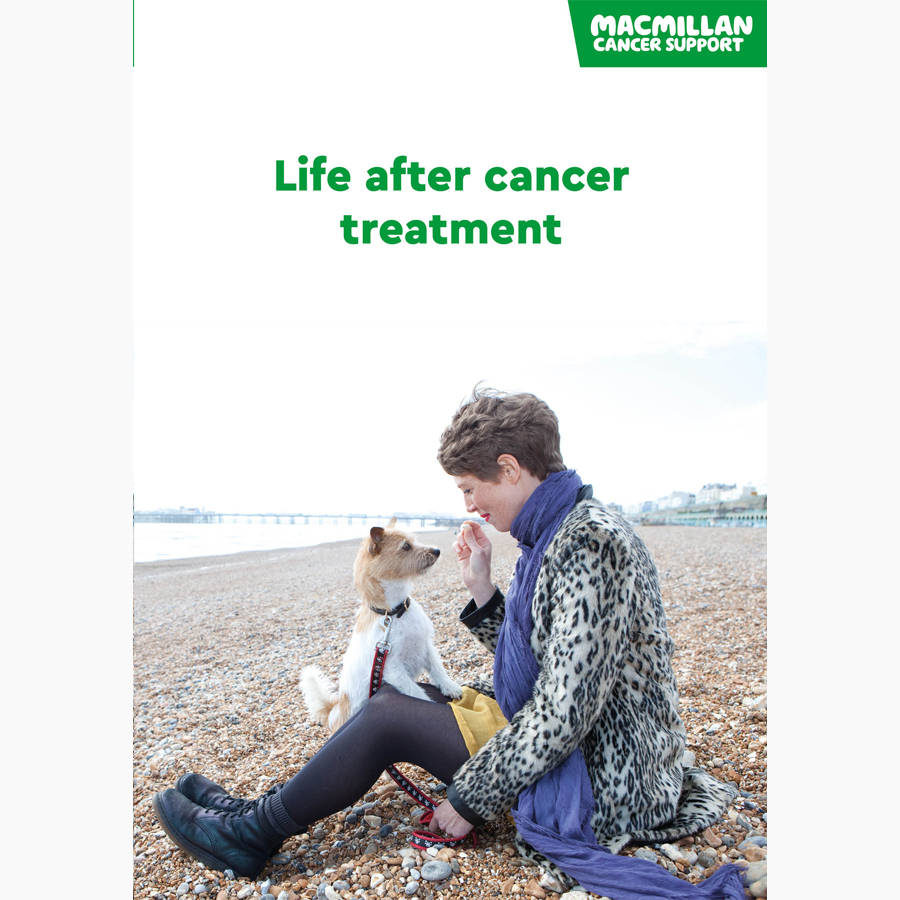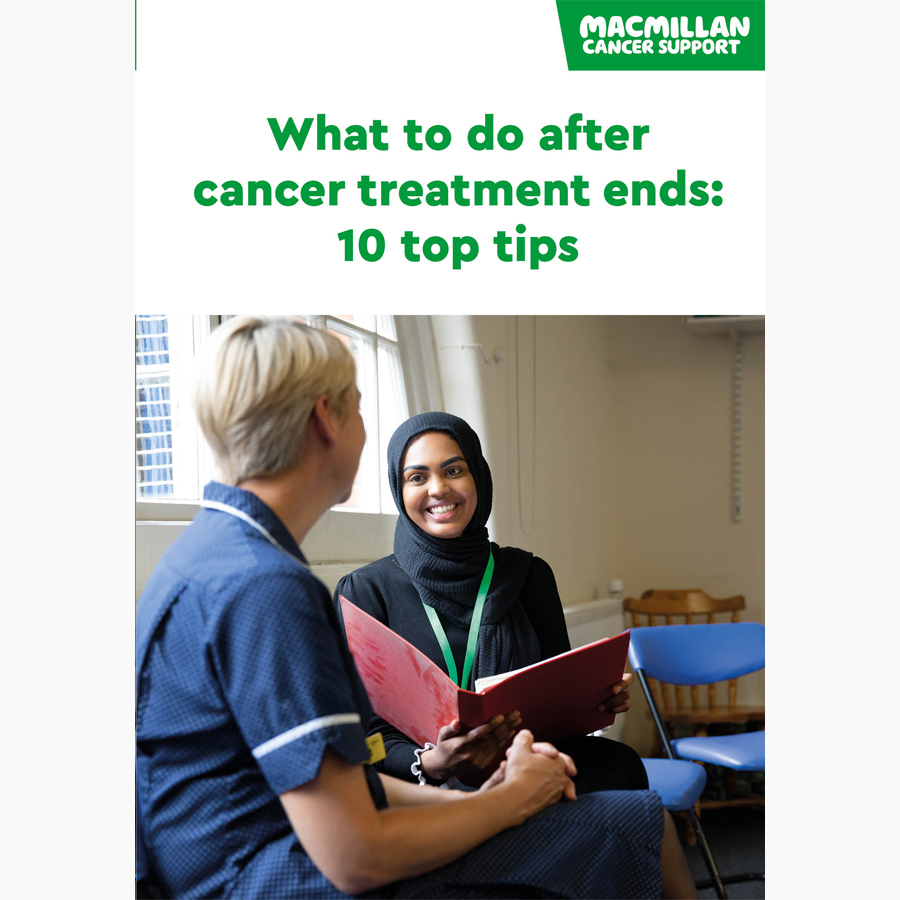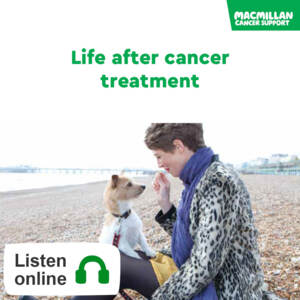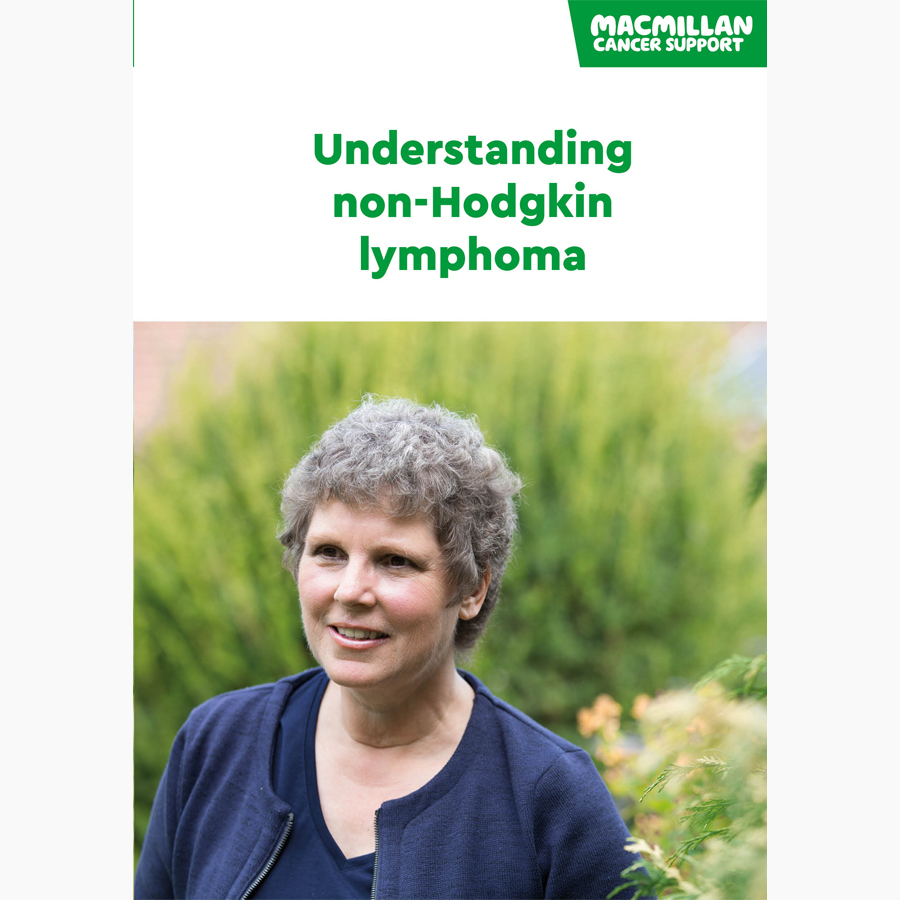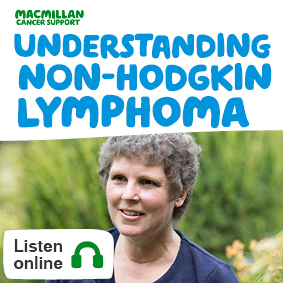Waldenström's macroglobulinaemia
Choose a type
On this page
-
What is Waldenström’s macroglobulinaemia?
-
Symptoms of Waldenström’s macroglobulinaemia
-
Causes of Waldenström’s macroglobulinaemia
-
Diagnosis of Waldenström’s macroglobulinaemia
-
The stages and grades of Waldenström’s macroglobulinaemia
-
Treatment for Waldenström's macroglobulinaemia
-
After treatment for Waldenström’s macroglobulinaemia
-
Access our lymphoma information in other formats
-
About our information
-
How we can help
What is Waldenström’s macroglobulinaemia?
Waldenström’s macroglobulinaemia (WM) is a type of non-Hodgkin lymphoma. It is sometimes called lymphoplasmacytic lymphoma.
WM develops when lymphoplasmacytic cells (LPL cells) become abnormal (cancerous). LPL cells are a type of B-cell. B-cells are white blood cells that normally help fight infection. B-cells are sometimes called B-lymphocytes.
The abnormal LPL cells (lymphoma cells) usually build up in the bone marrow, lymph nodes, spleen and other organs. Sometimes, this can make the spleen or lymph nodes become bigger.
As the lymphoma cells build up in the body, they make large amounts of a protein called immunoglobulin M (IgM). Sometimes doctors call it the M-protein or M-band. You may also hear it called a paraprotein. IgM circulates in the blood. Large amounts of IgM in the blood can cause the blood to become thicker and more slow-moving.
Related pages
For healthcare professionals
If you are a healthcare professional, use our guide to find the right information and support for your patients affected by lymphoma. This explains the support available from Macmillan and from other trusted organisations.
Symptoms of Waldenström’s macroglobulinaemia
Waldenström’s macroglobulinaemia (WM) usually develops over a long period of time. Some people have no symptoms. It can be discovered when blood tests are done for some other reason.
Symptoms can be caused by lymphoma cells building up in the bone marrow. The lymphoma cells take up space, which makes it difficult for the bone marrow to make enough normal blood cells.
The most common symptoms are:
- feeling weak and tired (fatigue)
- looking very pale or feeling breathless because of a lack of red blood cells (anaemia)
- repeated infections because of a lack of healthy white blood cells (which help fight infection)
- bruising or bleeding easily
- heavy, drenching night sweats
- weight loss.
Other symptoms
Some people have symptoms caused by high levels of IgM in the blood. The blood becomes thicker and more slow-moving than normal. This can cause:
- headaches
- confusion
- nosebleeds
- blurred vision.
Sometimes people develop numbness or tingling in their hands and feet. They may also have problems with their balance. This is due to nerve damage (neuropathy) caused by the abnormal protein in the blood.
Related pages
Causes of Waldenström’s macroglobulinaemia
Waldenström’s macroglobulinaemia (WM) is more common in people over 65. It is slightly more common in men than women. The causes of WM are mostly unknown. But some things may increase your risk of developing it.
MGUS
WM is sometimes linked to cases of monoclonal gammopathy of unknown significance (MGUS). This is a condition where there is abnormal IgM in the blood.
Having a close relative with lymphoma
People who have a family member with lymphoma have a higher than average risk of developing WM. But because WM is rare, their risk of getting it is still very low. Most people who develop WM do not have any family members with lymphoma.
Like other cancers, WM is not infectious. It cannot be passed on to other people.
We have more information about causes and risk factors of non-Hodgkin lymphoma.
Diagnosis of Waldenström’s macroglobulinaemia
The most common tests for diagnosing Waldenström’s macroglobulinaemia (WM) are:
You may have blood and bone marrow tests to look at the genes in your LPL cells. Around 9 out of 10 people with WM have a genetic change (mutation) called MYD88. Your doctor or nurse can tell you more about this.
You may have a scan so your doctor can look at your organs, such as your liver and spleen. Scans can also show lymph nodes in your body. If you have an enlarged lymph node, you may also have a biopsy for lymphoma.
You can read more about the tests you may have in our information about non-Hodgkin lymphoma.
Waiting for test results can be a difficult time. It may help to talk to your family, friends or specialist nurse.Related pages
The stages and grades of Waldenström’s macroglobulinaemia
Your test results will help your doctors find out how the lymphoma is affecting your blood and bone marrow. This is called staging.
There is no standard system for staging Waldenström’s macroglobulinaemia (WM). Instead, doctors look at several factors such as:
- the level of red blood cells in the blood
- the number of blood clotting cells (platelets) in the blood
- the amount of IgM in the blood
- the amount of a protein, called beta-2-microglobulin, in the blood.
Doctors use these factors to help them predict how the lymphoma may behave and to plan treatment.
Lymphomas are also grouped as either low-grade or high-grade. Low-grade lymphomas are usually slow growing. High-grade lymphomas usually grow more quickly. WM is a low-grade lymphoma and normally develops slowly. Rarely it can change (transform) to a high-grade lymphoma.
Knowing the stage and grade of the lymphoma helps your doctor plan the right treatment for you.
We have more information about staging and grading of non-Hodgkin lymphoma.
Treatment for Waldenström's macroglobulinaemia
A team of specialists will meet to discuss the best possible treatment for you. This is called multidisciplinary team (MDT).
Your doctor or cancer specialist or nurse will explain the different treatments and their side effects. They will also talk to you about things to consider when making treatment decisions.
WM often develops slowly. Some people may not need treatment straight away, or even for months or years. This is called watch and wait.
Even if you do not need treatment, you will have regular check-ups at the hospital. Your specialist will examine you and do blood tests. This is to check the levels of IgM protein in your blood as well as the number of red blood cells, white blood cells and platelets.
Your doctor may start treatment if:
- you have troublesome symptoms
- the level of IgM protein in your blood is increasing
- your blood count changes – for example, if you have low levels of red blood cells (anaemia).
The aim of treatment is to improve your quality of life and keep you well for as long as possible, with the fewest possible side effects. You can have most treatments for WM as an outpatient.
The main treatments for WM are:
-
Chemotherapy
Chemotherapy uses anti-cancer (cytotoxic) drugs to destroy cancer cells. You may be given one or more chemotherapy drugs. You usually also have a targeted therapy drug called rituximab with chemotherapy. Combinations of rituximab and chemotherapy that may be used include:
- DRC – this is made up of dexamethasone (a steroid), rituximab and the chemotherapy drug cyclophosphamide
- R-bendamustine – this is made up of rituximab and the chemotherapy drug bendamustine
- FR – this is made up of the chemotherapy drug fludarabine and rituximab
- FCR – this is made up of the chemotherapy drugs fludarabine and cyclophosphamide, and rituximab
- R-cladribine – this is made up of rituximab and the chemotherapy drug cladribine.
-
Targeted therapy
Rituximab is usually given in combination with chemotherapy. Other targeted therapy drugs called Ibrutinib (Imbruvica®) and Bortezomib (Velcade®) may be used if WM comes back after treatment. Each drug may be given on its own or in combination with rituximab. These drugs may only be available in some situations. If a drug is not routinely available on the NHS, there may be other ways you can get access to it.
-
Steroids
Steroids are drugs that are often given with chemotherapy to treat lymphomas. They help make chemotherapy more effective.
-
Stem cell transplants
A stem cell transplant is an intensive treatment, so it is not suitable for everyone. You may have a transplant using your own stem cells (autologous stem cell transplant) or cells from a donor (allogeneic stem cell transplant).
You may have some treatments as part of a clinical trial.
You may also have treatments for symptoms of WM:
-
Blood transfusions
If you have symptoms caused by a low number of red blood cells, you may have a blood transfusion.
-
Plasma exchange
Plasma exchange is a process that can be done to thin the blood.
After treatment for Waldenström’s macroglobulinaemia
People often have many different feelings when they finish lymphoma treatment. You may feel relieved that treatment has finished, but worried about what will happen in the future.
You will have appointments with your lymphoma doctor or nurse less often than before. But at the same time, you may have new challenges to cope with and things to think about.
We have information below about some of the things people ask about after lymphoma treatment. But you may have other questions or need information about something else. If there is something you want to talk about at any point after treatment, you can:
- call the Macmillan Support Line free on 0808 808 00 00
- chat to our specialists online
- visit our Online Community to talk to people who have been affected by lymphoma, share your experience, and ask an expert your questions.
Related pages
Other organisations who offer information and support
The organisations below also offer information and support:
-
Blood Cancer UK
Blood Cancer UK offers support and information to people affected by blood cancers, including lymphoma.
-
Lymphoma Action
Lymphoma Action provides high quality information and support for people affected by lymphoma. It provides helpline services and a range of peer support including online support meetings, educational events and webinars. Its website includes TrialsLink, a database of lymphoma clinical trials.
Lymphoma follow-up
Related pages
Side effects of lymphoma treatment
You may have some ongoing side effects as you recover from lymphoma treatment. You can use our impacts of cancer A-Z to search for information about managing different symptoms and side effects. Or find out more about side effects of treatment for Hodgkin lymphoma or treatment for non-Hodgkin lymphoma.
-
Tiredness and fatigue
Tiredness (fatigue) often affects people with cancer. It can be caused by lymphoma or be a side effect of lymphoma treatment. RESTORE is an online resource that aims to help people living with cancer related fatigue.
-
Sexual well-being
Lymphoma and its treatment can sometimes affect your sex life. There are ways to improve your sexual well-being and to manage any problems.
-
Fertility
Treatment for lymphoma may affect your fertility. If you are worried about your fertility it is important to talk with your doctor before you start treatment. We have more information about:
Sometimes side effects may continue or develop months or years after treatment. These are called late effects. We have more information about long-term and late effects of treatment for lymphoma.
Well-being and recovery
It can take time to recover after lymphoma treatment. Some days you may feel better than others.
It is important to know where to get support or information if you need it. People often need support even some time after lymphoma treatment. But sometimes it is difficult to know who to ask for help. To find support:
- ask your GP or someone from your cancer team for advice about support in your area
- search cancercaremap.org to find cancer support services near you
- call us free on 0808 808 0000 or talk to us online - our cancer information and support specialists can offer guidance and help you find what you need.
Our course Help to Overcome Problems Effectively (HOPE) helps people during and after cancer treatment. It is a free, interactive, group based, self management support course. It runs for 6 weeks, with each weekly session lasting 2.5 hours. To find out more about HOPE courses in your area, email ServiceOpsSupport@macmillan.org.uk
A healthy lifestyle can help speed up your recovery. Even small lifestyle changes may improve your well-being and long-term health.
Related pages
Booklets and resources
Other useful information
Access our lymphoma information in other formats
We are working to make our website as accessible as possible. We want everyone to be able to use it to find the information they need. We have tips about using settings on your computer or device to help you use our website in our accessibility statement.
We also provide information in a range of languages and formats. If you cannot find the information you are looking for in the format or language you need, email us at cancerinformationteam@macmillan.org.uk
Order our non-Hodgkin lymphoma booklet
Download our lymphoma booklet and ebooks
Our Understanding non-Hodgkin lymphoma booklet is available as a pdf to download or view online and in ePub or Mobi formats to download.
Booklets and resources
Listen to our lymphoma audiobook
You can listen to our Understanding non-Hodgkin lymphoma audiobook. You can also search our full range of audiobooks.
Booklets and resources
Find non-Hodgkin lymphoma information in your language
We have a range of translated cancer information. This includes information about different cancer types, being diagnosed, cancer treatment, and side effects. We have some lymphoma information in the following languages. You can also search our most up to date list of web pages we have translated on request.
- Bulgarian - Mantle cell lymphoma / Мантелноклетъчен лимфом [PDF]
- German - Follicular lymphoma / Follikuläres Lymphom (FL) [PDF]
- Polish - Diffuse large B-cell lymphoma (DLBCL) / Chłoniak rozlany z dużych komórek B [PDF]
- Polish - Lymphoma / Chłoniak [PDF]
- Slovak - Anaplastic large cell lymphoma (ALCL) / Anaplastický veľkobunkový lymfóm [PDF]
- Slovak - Follicular lymphoma / Folikulový lymfóm [PDF]
- Tamil - Follicular lymphoma [PDF]
If you would like any of our lymphoma information translated into your language, please email cancerinformationteam@macmillan.org.uk
Watch British sign language videos
You can watch our BSL videos about cancer on YouTube.
Find our easy read booklets
Our easy read booklets use simple words and pictures to tell you about cancer. They can be useful if you want information that is easier to understand.
Looking for large print, Braille or another format?
If you would like our information in a different format such as large print or Braille, email us at cancerinformationteam@macmillan.org.uk or call us free on 0808 808 00 00.
About our information
-
References
Below is a sample of the sources used in our Waldenström’s macroglobulinaemia (WM) information. If you would like more information about the sources we use, please contact us at cancerinformationteam@macmillan.org.uk
National Institute of Health and Care Excellence (NICE). Blood and bone marrow cancers. NICE Pathways. Last accessed 3 December 2020.
National Institute of Health and Care Excellence (NICE). Ibrutinib for treating Waldenström’s macroglobulinaemia. Technology appraisal guidance (TA491). Published 22 November 2017. Available here: 1 Recommendations | Ibrutinib for treating Waldenstrom’s macroglobulinaemia | Guidance | NICE
NHS England: Clinical commissioning policy: Bortezomib for relapsed/refractory Waldenström’s macroglobulinaemia (all ages). NHS England reference 170074P. Available here: Bortezomib-for-relapsed-_-refractory-Waldenstroms-Macroglobulinaemia-all-ages.pdf (england.nhs.uk)
-
Reviewers
This information has been written, revised and edited by Macmillan Cancer Support’s Cancer Information Development team. It has been reviewed by expert medical and health professionals and people living with cancer. It has been approved by Senior Medical Editor, Dr Anne Parker, Consultant Haematologist.
Our cancer information has been awarded the PIF TICK. Created by the Patient Information Forum, this quality mark shows we meet PIF’s 10 criteria for trustworthy health information.
Date reviewed
This content is currently being reviewed. New information will be coming soon.

Our cancer information meets the PIF TICK quality mark.
This means it is easy to use, up-to-date and based on the latest evidence. Learn more about how we produce our information.
How we can help



